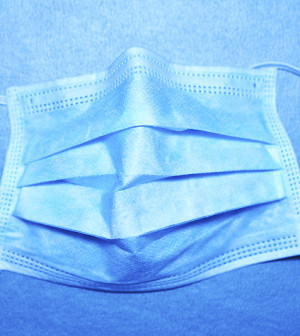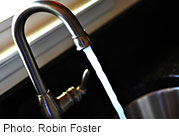- Strengthening Your Relationship: Practical Strategies
- Skip Storing This Everyday Product in the Fridge Door
- Green Tea + B3 Pairing May Boost Brain Health
- Navigating Your Midlife Crisis: Embracing New Possibilities
- City Raccoons Showing Signs of Domestication
- Mapping the Exposome: Science Broadens Focus to Environmental Disease Triggers
- One Week Less on Social Media Linked to Better Mental Health
- Your Brain Changes in Stages as You Age, Study Finds
- Some Suicide Victims Show No Typical Warning Signs, Study Finds
- ByHeart Formula Faces Lawsuits After Babies Sickened With Botulism
Leaky Pipes May Mean Tainted Tap Water: Study


It’s long been thought that leaks in water pipes wouldn’t pose a health threat to the water supply. But a new study suggests otherwise.
As explained by the British researchers, the pressure in water mains typically forces water out through any leak — preventing any contaminants from getting in. However, their study finds that if the damage leads to a significant pressure drop in a pipe, dirty water surrounding the pipe can then get sucked in through breaks.
It was believed that only clean water from the leak would be sucked into a broken pipe, and that even if contaminants were also sucked in, they would be expelled once water pressure in the pipe returned to normal.
However, a team led by engineer Joby Boxall of the University of Sheffield discovered that groundwater from around the pipe — which is often contaminated — can be sucked into and remain in the pipe. It then travels through the water supply network, they said.
“Previous studies have shown that material around water pipes contains harmful contaminants, including viruses and bacteria from feces, so anything sucked into the network through a leak is going to include things we don’t want to be drinking,” Boxall said in a university news release.
“Many of us will have had [an upset] tummy in the past that we couldn’t quite explain, often putting it down to something we’d eaten,” he said. “It now seems possible that some of these illnesses could have been caused not by food, but by water.”
Study co-author Richard Collins said that the new “research shows that contaminants that enter through a leaking pipe could be reaching consumers’ taps, and although this will be at very low concentrations, it would fail the safety tests if detected.”
In addition, Collins added in the news release, “We also believe that microorganisms, including pathogens, which enter the network in this way could attach to the inner surface of the pipe and multiply. If they are later dislodged by another change in flow, they could then reach our taps in higher concentrations.”
More information
The U.S. Centers for Disease Control and Prevention has more about drinking water.
Source: HealthDay
Copyright © 2025 HealthDay. All rights reserved.










